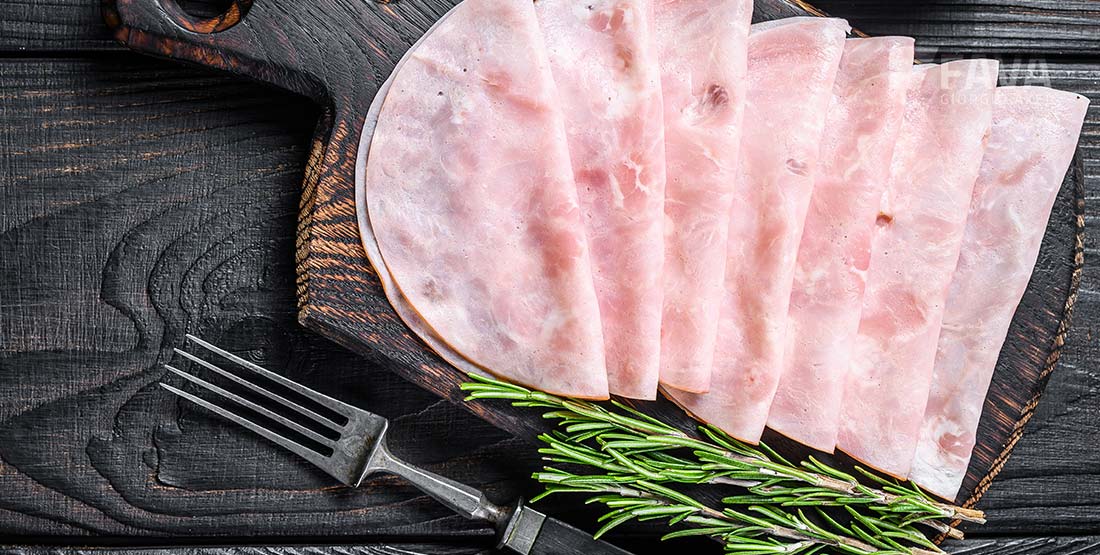Demolding, pasteurizing, maturing
The demolding operations, that is to say the products extraction from the molds, are different in presence of exudate collected in pockets or in parts of the packaging. After demolding you can proceed in different ways, for example piercing the parts with exudate in a way to disperse the liquid/jelly and put the product in contact with the environment. This technological approach minimizes the gas (formation during cooking process) formation/discharge, putting the product in contact with the atmosphere for enough time. It’s clear that this procedure increases the risk of product (that won’t be pasteurized) contamination and, consequently, the shelf life reduction. Another modality, that can be used with thermoformed product, establishes the separation of the exudate pockets and the thermo-welding of the part containing the product not to put it in contact with atmosphere. The advantages of this method, if it is enough reliable, are the exudate (liquid reach of proteins that can be sold to cosmetics industry and, above all, to pet food industry)collection and the possibility to proceed to maturing the product. As an alternative you can completely remove the cooking packaging, trim the product removing jelly parts on it; package again the product and then pasteurize it. This process best guarantees the product quality, but of course expensive. The product maturing, that is to say keeping it, anyway under-vacuum packaged, for a certain period at a temperature between -1°C and 0°C, has the aim to level the humidity, the color, the flavor and to increase the product compactness to have the best slicing performances. A long maturing (it can reach even 2 months) needs room and financial assets, but it ensures a faster slicing speed.
Slicing modality
The slicing yield is related to the absence (or minimization) of scraps. It’s important to have long and compact products to maximize the productivity of the slicing plants that are very expensive, even in maintenance. Normally the cooked products temperature for slicing hasn’t to go under -5°C, to avoid product crumbling during cutting. The goal is to reach 600 slices/hour, this speed can be easily obtained if the product is “gummy”. The “gummy” quality permits to have thin slices, in Italy between 0,7 and 1 mm. The “gummy” quality has to be homogeneous along all the bar to slice. This result can be obtained with molds with uniform pressure distribution and without structural deformation.
In brief it’s important to intervene on:
• Molding modalities
• Availability of a mold that can adapt itself to the product volume changing
• Availability of a mold stiff enough to assure the uniform contact pressure between the muscular bands
• Prolonged product maturing.

